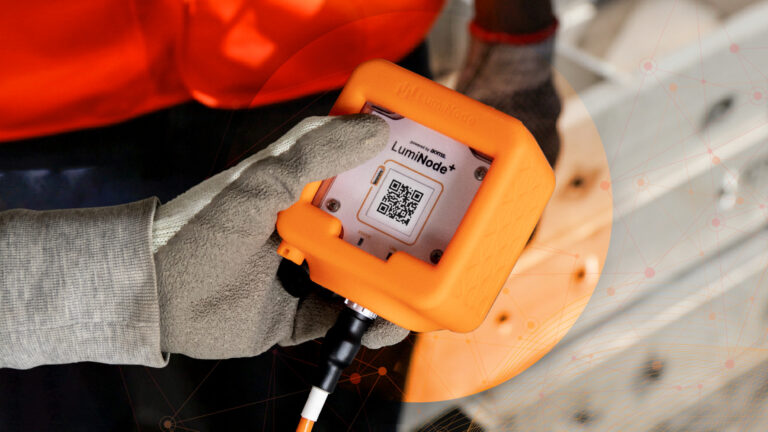
If you’ve ever tried to cure concrete, apply drywall or just attempt any kind of construction work in -20℃ temperatures you know it’s not easy (or comfortable). Frigid temperatures, heavy snowfall and icy conditions are a constant threat to project timelines and budgets. Maintaining the right climate and ambient temperature on the jobsite is crucial.
The bad news is we can’t predict the severity of our upcoming winter. The good news? Advancements in equipment efficiency and technology means we don’t have to.
With real-time ambient temperature sensors it’s possible to prepare for even the coldest winters. And it’s proving to be a game changer on the jobsite – ensuring projects not only remain on schedule but stay within budget AND meet quality standards. The benefits are pretty great too – reduced risks and improved safety (to name a few). If you need more reasons why ambient temperature monitoring technology is right for your worksite this winter, we’ve got you covered.
1. Helps lower costs
Turning your heaters on in November and leaving them on until April is a surefire way to drive up costs. Or….you can monitor your jobsite temperatures and run your heaters only when you need to. Sounds pretty good, right?
Excessive heat doesn’t just burn profits; it can lead to other issues too. Flooring materials, drywall, concrete and adhesives all require specific temperature and relative humidity levels – straying from them can result in costly project delays. Ambient temperature monitoring and management not only optimizes heating equipment by reducing energy consumption but also ensures heaters operate only when necessary. Monitoring can also help to identify equipment performance issues early on, reducing downtime and repair costs.
2. Improves operational efficiency
Who doesn’t love win-win situations? Real-time data can help improve operational efficiency, enhance safety, compliance and overall project success.
Construction sites are often exposed to variable weather conditions that can impact equipment performance. Real-time data from temperature monitoring technology can prompt immediate adjustments to work schedules and processes, reducing delays and improving productivity. This data can then provide you with detailed records of environmental conditions throughout the whole construction project.
3. Keeps workers safe
Lack of heat in the winter months can be detrimental to your workers’ safety and productivity. But overheating is one of the most common winter hazards – especially in areas with combustible materials.
Real-time temperature monitoring helps with both – ensuring your workers are comfortable while also preventing overheating by sending alerts when temperatures exceed safe thresholds. This also means you don’t have to send workers for manual checks. The right people are notified when ambient temperatures rise, which can help reduce labour costs and improve the overall efficiency of the project.
Many regulatory bodies are now setting specific heating standards at construction sites to ensure worker safety and protect materials. Remote monitoring can simplify compliance.
4. Risk mitigation is always top of mind
Consider a project involving drywall, concrete or any other material that requires a certain temperature to set and adhere properly. Errors don’t just set back your schedule, but they can be costly if you have to replace materials and pay for extra labour. Early detection can prevent material degradation and structural failures – minimizing costly repairs and liability.
More information = less risk. Temperature and humidity data collected from the jobsite can also be easily extracted to support insurance claims. Documentation is crucial for compliance verification, dispute resolution, and process improvement. It’s also easily shared with all stakeholders, including project managers, clients, and regulatory bodies – promoting better transparency and accountability across the whole project.
5. Last but not least: plan ahead and stay prepared
Before you plan your heating for this winter, make sure you understand what type of equipment your jobsite needs AND line up your heat monitoring technology. That’s just what we’re doing this winter with ambient heat monitoring solutions. We know the last thing our customers want is to go over-budget or fall behind schedule due to poorly monitored heat. And if you can avoid unpredicted incidents while reducing your equipment’s fuel and carbon emissions… even better!
Work with a rental partner who can support you through all of this – informing you of how they’re going to heat your project, while also providing a great team of people and the right technology to monitor your heat and track your progress in the most cost-effective way.
To find out more about our heat monitoring solutions, contact our sales team.